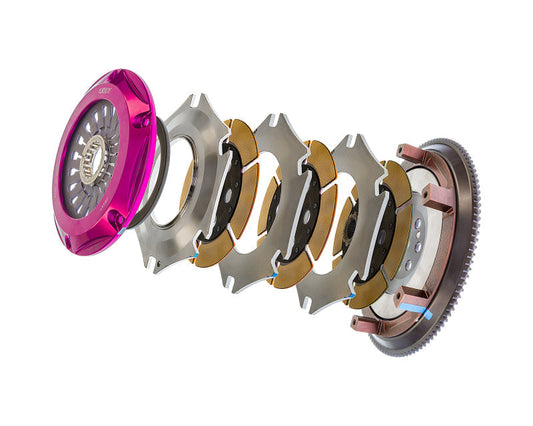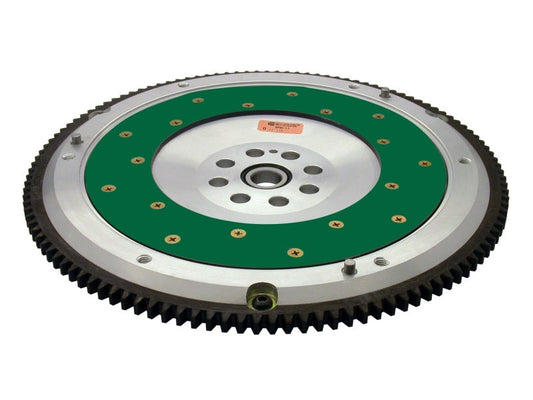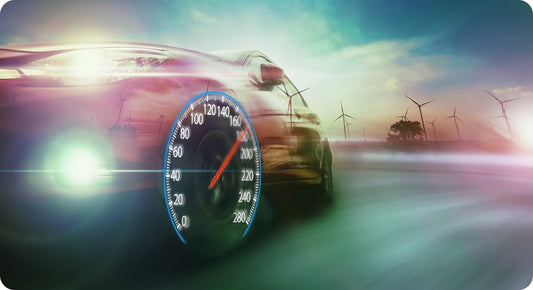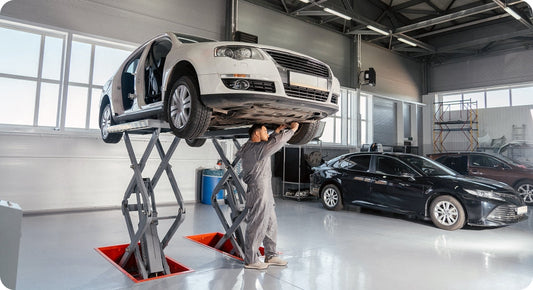If you're looking for one of the fastest and most affordable ways to boost horsepower, Nitrous Oxide Systems might be exactly what your performance build needs. Known for delivering instant power gains, nitrous is a popular choice for drag racers, street warriors, and horsepower junkies alike. But as powerful as it is, nitrous needs to be handled with precision and safety in mind. Contact WOT Performance Parts today for more information.
At WOT Performance Parts, we offer the best nitrous kits and components to help you harness that extra power safely and reliably, without breaking the bank.
What Are Nitrous Oxide Systems?
Nitrous Oxide Systems are performance-enhancing systems that inject nitrous oxide (N₂O) into the engine’s intake to increase the amount of oxygen available for combustion. More oxygen means you can burn more fuel, which creates more power.
The chemical compound nitrous oxide contains two nitrogen atoms and one oxygen atom. Under pressure, it remains in liquid form. When injected into the intake and heated during combustion, it breaks down and releases extra oxygen, helping generate a surge in horsepower, often 30 to 200+ HP, depending on the setup.
Types Of Nitrous Oxide Systems
Understanding the types of Nitrous Oxide Systems is key to choosing the right one for your performance goals.
1. Wet Nitrous System
-
Injects both fuel and nitrous into the intake stream.
-
Typically installed at the throttle body or intake manifold.
-
Provides a more balanced air-fuel mixture.
-
Best for naturally aspirated engines.
2. Dry Nitrous System
-
Injects only nitrous oxide, relying on the fuel injectors to add fuel.
-
Common on modern fuel-injected cars with factory ECU control.
-
Easier to install but less tunable than wet systems.
3. Direct Port Nitrous System
-
Delivers nitrous and fuel directly into each intake runner.
-
Provides even distribution across all cylinders.
-
Best for high-performance or race applications.
Benefits Of Using Nitrous Oxide Systems
-
Instant Power Gains: A properly tuned nitrous system can add 50–200+ horsepower with the push of a button.
-
Cost-Effective Power: Compared to turbochargers or superchargers, nitrous is significantly cheaper and easier to install.
-
On-Demand Boost: Unlike forced induction systems, nitrous only activates when you need it.
-
Flexibility: Systems can be configured for street or full race applications.
How To Safely Install A Nitrous Oxide System
Installing Nitrous Oxide Systems requires care, precision, and quality components. Here’s a step-by-step overview of how to get the job done right.
1. Choose The Right Kit
Select a system designed for your vehicle’s engine type and intended use. At WOT Performance Parts, we offer nitrous kits for:
-
EFI and carbureted engines
-
4-cylinder, 6-cylinder, and V8 platforms
-
Street, drag, or track use
Make sure the kit includes all necessary components: solenoids, lines, jets, wiring, arming switches, and a bottle with a proper mounting bracket.
2. Install The Bottle Securely
Mount the nitrous bottle in the trunk or cargo area using a secure bracket at a 10–15° angle with the valve facing forward.
-
Ensure easy access for bottle refills.
-
Use insulated lines for consistent pressure.
3. Run The Nitrous Line To The Engine Bay
Route the main line carefully to avoid heat and moving parts. Use grommets or bulkhead fittings when passing through body panels.
4. Install The Solenoids And Nozzles
-
Wet System: Mount nitrous and fuel solenoids near the throttle body or intake.
-
Dry System: Mount the nitrous solenoid and connect it to an intake port or throttle body spacer.
-
For direct port systems, tap each runner for a nozzle and plumb the lines accordingly.
5. Wiring & Safety Switches
Wire the arming switch, window switch, and wide-open throttle (WOT) switch correctly.
-
Use a WOT switch or TPS sensor to activate nitrous only at full throttle.
-
A window switch ensures nitrous is only used within safe RPM ranges.
6. Jetting & Tuning
-
Start with conservative jetting (e.g., 50 HP shot) and work your way up.
-
Always follow the manufacturer’s jet chart for the correct nitrous-to-fuel ratio.
-
Consider using a progressive controller for smoother power delivery.
7. Tune The ECU (If Necessary)
For EFI systems, a tune may be needed to adjust timing and fuel delivery. Some nitrous setups work with stock tunes, but performance is always better with custom tuning.
8. Use Safety Accessories
Install optional safety components to protect your engine:
-
Fuel pressure safety switch: Prevents nitrous activation if fuel pressure is too low.
-
Purge valve: Removes air from the line for immediate nitrous delivery.
-
Bottle heater: Maintains optimal pressure (950–1050 psi) for consistent performance.
-
Blow-down tube: Vents pressure outside the cabin if the safety disk ruptures.
Pro Tips For Running Nitrous Safely
-
Never use nitrous with low fuel pressure.
-
Never activate nitrous at low RPMs or part throttle.
-
Use colder spark plugs and reduce timing advance for larger shots.
-
Monitor air-fuel ratios with a wideband O2 sensor.
Get The Best Nitrous Kits At WOT Performance Parts
At WOT Performance Parts, we offer the best selection of Nitrous Oxide Systems from trusted brands like NOS, ZEX, Nitrous Express, and more. Whether you’re building a weekend warrior or a full-blown race car, we’ve got everything you need for safe, powerful, and reliable nitrous performance.






